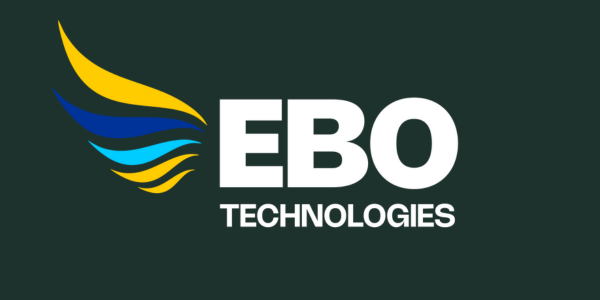Build Future-Proof Skills in Azure Security
- Hands-on, lab-intensive training aligned with the official Microsoft curriculum
- Build real-world Azure security skills in identity, access, platform protection, and data security
- Gain job-ready expertise in monitoring, threat management, and governance
- Learn directly from Microsoft-certified instructors with proven industry experience

Program Highlights
The AZ-500 Microsoft Azure Security Technologies Training empowers IT professionals to secure Azure environments across identity, platform, data, and operations. Built on the official Microsoft curriculum, the program integrates custom hands-on labs and real-world scenarios to develop practical security expertise. Delivered by industry experts in highly interactive sessions, participants gain skills in Azure AD, key vaults, firewalls, containers, and Microsoft Sentinel, while also benefiting from career mentorship, post-training support, and access to recorded sessions.
- 30-Hour LIVE Instructor-Led Training
- Free Self Paced Video for Azure-900
- Career Guidance and Mentorship
- Real-World Scenarios
- Custom + Microsoft Hands-on Labs
- Extended Post-Training Support
- Official Microsoft Curriculum
- Learn from Industry Experts
- Access to Recorded Sessions
AZ-500 Microsoft Azure Security Technologies
-
About Course
-
Course Curriculum
-
Target Audience
-
Pre-requisites
-
Course Objectives
The Azure Security Technologies (AZ-500) training by InfosecTrain will prepare professionals to protect and monitor Azure environments through four focused learning paths: Identity & Access, Platform Protection, Data & Application Security, and Security Operations. Learn to secure identities using Azure AD, PIM, and Conditional Access; defend networks and hosts with firewalls, NSGs, and endpoint protection; safeguard data with Key Vault and encryption; and manage threats using Azure Monitor, Defender for Cloud, and Sentinel. Delivered through live interactive sessions and hands-on labs, the course ensures real-world readiness and expert support.
Learning Path 1: Manage Identity and Access
-
- Module 1 – Secure Azure Solution with Azure Active Directory
- Configure Azure AD and Azure AD domain services for security
- Create users and groups that enable secure usage of your tenant
- Use MFA to protect users’ identities
- Configure passwordless security options
- Module 2 – Implement Hybrid Identity
- Deploy Azure AD Connect
- Pick and configure the best authentication option for your security needs
- Configure password writeback
- Module 3 – Deploy Azure AD Identity Protection
- Deploy and configure identity protection
- Configure MFA for users, groups, and applications
- Create conditional access policies to ensure your security
- Create and follow an access review process
- Module 4 – Configure Azure AD Privileged Identity Management
- Describe zero trust and how it impacts security
- Configure and deploy roles using privileged identity management (PIM)
- Evaluate the usefulness of each PIM setting as it relates to your security goals
- Module 5 – Design an Enterprise Governance Strategy
- Explain the shared responsibility model and how it impacts your security configuration
- Create Azure policies to protect your solutions
- Configure and deploy access to services using RBAC
- Module 1 – Secure Azure Solution with Azure Active Directory
Learning Path 2: Implement Platform Protection
-
- Module 1 – Implement Perimeter Security
- Define defense in depth
- Protect your environment from denial-of-service attacks
- Secure your solutions using firewalls and VPNs
- Explore your end-to-end perimeter security configuration based on your security posture
- Module 2 – Configure Network Security
- Deploy and configure network security groups to protect your Azure solutions
- Configure and lockdown service endpoints and private links
- Secure your applications with application gateway, web app firewall, and front door
- Configure ExpressRoute to help protect your network traffic
- Module 3 – Configure and Manage Host Security
- Configure and deploy endpoint protection
- Deploy a privileged access strategy for devices and privileged workstations
- Secure your virtual machines and access to them
- Deploy Windows Defender
- Practice layered security by reviewing and implementing security center and security benchmarks
- Module 4 – Enable Containers Security
- Define the available security tools for containers in Azure
- Configure security settings for containers and Kubernetes services
- Lock down network, storage, and identity resources connected to your containers
- Deploy RBAC to control access to containers
- Module 1 – Implement Perimeter Security
Learning Path 3: Secure Your Data and Applications
-
- Module 1 – Deploy and Secure Azure Key Vault
- Define what a key vault is and how it protects certificates and secrets
- Deploy and configure Azure Key Vault
- Secure access and administration of your key vault
- Store keys and secrets in your key vault
- Explore key security considerations like key rotation and backup/recovery
- Module 2 – Configure Application Security Features
- Register an application in Azure using app registration
- Select and configure which Azure AD users can access each application
- Configure and deploy web app certificates
- Module 3 – Implement Storage Security
- Define data sovereignty and how that is achieved in Azure
- Configure Azure Storage access in a secure and managed way
- Encrypt your data while it is at rest and in transit
- Apply rules for data retention
- Module 4 – Configure and Manage SQL Database Security
- Configure which users and applications have access to your SQL databases
- Block access to your servers using firewalls
- Discover, classify, and audit the use of your data
- Encrypt and protect your data while it is stored in the database
- Module 1 – Deploy and Secure Azure Key Vault
Learning Path 4: Manage Security Operations
- Module 1 – Configure and Manage Azure Monitor
- Configure and monitor Azure Monitor
- Define metrics and logs you want to track for your Azure applications
- Connect data sources to and configure Log Analytics
- Create and monitor alerts associated with your solution’s security
- Module 2 – Enable and Manage Microsoft Defender for Cloud
- Define the most common types of cyber-attacks
- Configure Azure Security Center based on your security posture
- Review Secure Score and raise it
- Lock down your solutions using Security Center and Defender
- Enable Just-in-Time access and other security features
- Module 3 – Configure and Monitor Microsoft Sentinel
- Explain what Azure Sentinel is and how it is used
- Deploy Azure Sentinel
- Connect data to Azure Sentinel, like Azure Logs, Azure AD, and others
- Track incidents using workbooks, playbooks, and hunting techniques
This course is ideal for:
- Azure Administrators
- Azure Cloud Engineers
- IT Professionals looking forward to becoming Azure Security Engineers
- IT Professionals preparing for Microsoft AZ-500 exam
- Basic understanding of networking
- Basic understanding of Windows/Linus OS
- Exposure to working with PowerShell Client on Windows or MacOS
- Suggested to have knowledge of Microsoft Azure Administrator Associate
- Understanding of basic IT security principles
By the end of this training program, participants will be able to:
- Manage identity and access through Azure AD and conditional policies
- Configure security for Azure resources, workloads, and virtual networks
- Protect applications and data using encryption, certificates, and Key Vault
- Implement advanced security controls across hybrid and multi-cloud environments
- Monitor threats with Azure Monitor, Defender, and Microsoft Sentinel integration
- Automate security operations and integrate with DevOps processes and workflows
- Confidently prepare for Microsoft AZ-500 Azure Security Technologies certification exam

Still Confused About Course?
Talk to Our Experts!
